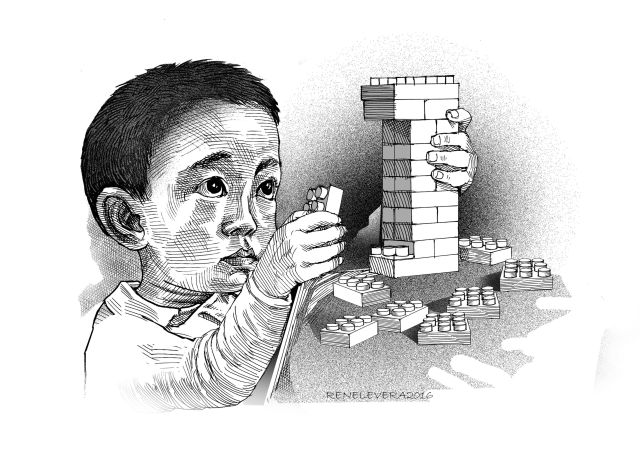
Watching our seven-year-old son putting the Lego bricks together, I felt so very old-time. At seven I played with marbles and rubber bands, and later with domino tiles, which, while having a rough similitude to the Lego pieces, served as ingredients for a completely different type of play.
The boy could fashion many things with the Lego, mostly cars and trucks and superheroes. In fact, to satisfy his obsession with the bricks, his parents took him on a visit to a park called Legoland.
I realize that one could put up all but everything with the bricks, and that these come with a theme — space, dinosaurs, robots, superheroes, pirates, trains, castles. Perhaps the biggest Lego set so far produced was the Taj Mahal, which required 5,922 pieces to build.
Not improbably, in the coming days, Lego might issue instructions on how to set up the world’s famous edifices, such as the great churches and cathedrals, the Sagrada Familia, the Hagia Sophia, and, who knows, even the Second Temple of Jerusalem.
Jerusalem had two temples. Solomon built the first, which the Babylonians destroyed when they conquered the city in 586 BCE, holding a part of the population captive and keeping them as exiles in Babylon. When the Jews returned to Jerusalem 27 years later, they made it their prime concern to rebuild the Temple, which took them 20 years to complete. Herod expanded the Temple by building a plaza around it, called the Temple Mount. Huge walls supported the Mount, of which a part, the Western Wall, still remains, the only relic we have of the Second Temple after the Romans leveled it in the year 70 CE. The Western Wall belonged to the support that held up the surrounding space, and was not part of the Temple itself.
We know little of how the Second Temple looked like, our only sources, aside from bits of archaeological findings, being the New Testament, the historian Josephus and pieces of Rabbinical writings. They say that the Temple was of shining white marble and gold and had entrances of bronze, and that one could not gaze at it in daylight without being blinded.
This was the same Temple of which, Luke writes in his Gospel, Jesus told his disciples, after hearing the praises of the people who saw its costly stones and votive offerings, “All that you see here — the days will come when there will not be left a stone upon another stone that will not be thrown down.”
Jesus was, of course, predicting the destruction of the Temple by the Romans. But, when questioned as to the time of its occurrence and the signs leading to it, he talked about the end of the world, which would be preceded by deceptions, wars, conflicts and calamities. Then he put the disciples on notice that (just like him) they would meet with persecution. He called on them to keep going and assured them of his protection (“You will be hated by all because of my name, but not a hair on your head will be destroyed. By your perseverance you will secure your lives.”)
How fascinating it would be if people advanced in the game decided to build the Second Temple using the Lego bricks. In their own way the archaeologists have been trying to put the pieces together using fragments and debris recovered from the Temple Mount, and so far they have restored parts of the floor and roof. Since no one knows the exact architecture of the Second Temple, and the archaeologists have unearthed only a few hundred shards, we might never see either of the versions, the Lego or the archaeological. In the meantime, what the rest of us can do instead is build and secure our lives, by our perseverance.

